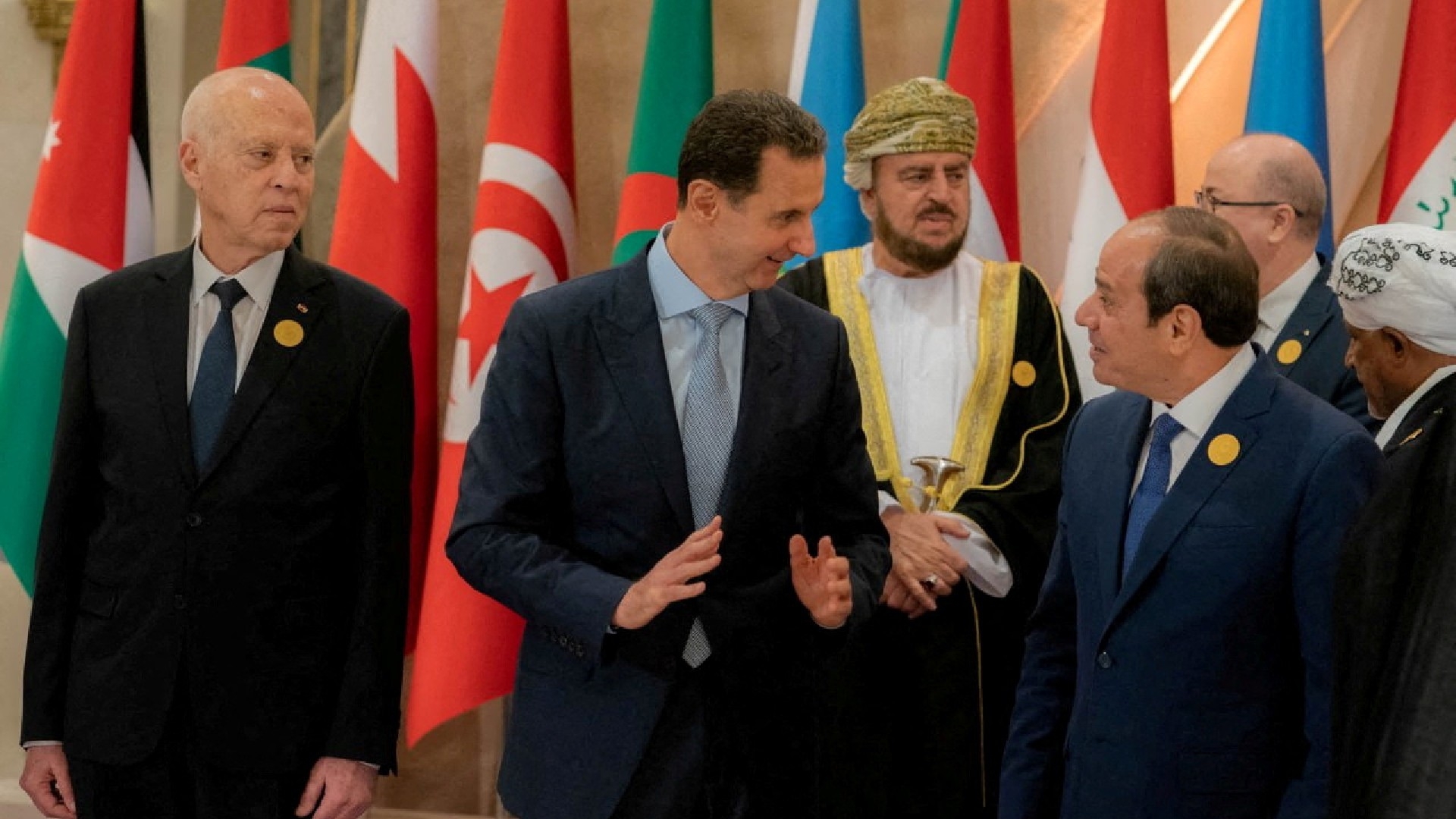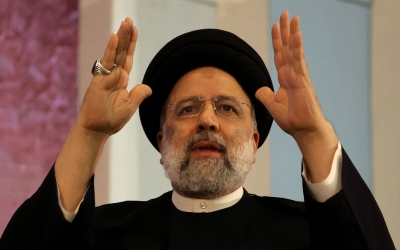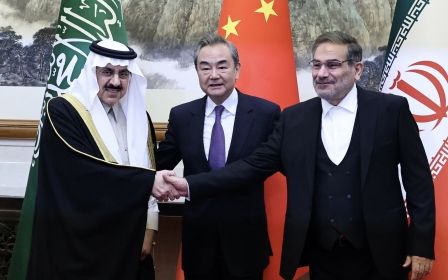From revolutions to rapprochement: The end of the ‘2011 era’ in the Middle East?

The late Fred Halliday, professor of international relations at the London School of Economics, noted how, seemingly once a decade, seismic events would rock the foundations of Middle Eastern geopolitics.
The Suez crisis, the Six Day War, the Iranian revolution, the 1991 Gulf War, and the attacks of September 11 each shifted the priorities of regional and international powers in the Middle East, shaping the decade that followed.
Halliday cautioned against a rigid "great turning points of history" viewpoint, observing how there was often as much continuity as change. But his hypothesis seemed to be confirmed a year after his death with the eruption of the Arab Spring in 2011. Once again, those events and their repercussions appeared to define regional politics for years afterwards.
But a case can be made that the "2011 era" is now reaching a close. Recent shifts in regional diplomacy, from Turkey’s reconciliation with Gulf rivals, to Saudi Arabia’s detente with Iran, followed by Syria’s return to the Arab League suggest that the Middle East’s international relations are moving away from a viewpoint largely defined by the aftermath of the Arab Spring.
I say "2011 era" rather than the "era of the Arab Spring", because the latter ended some years earlier. Despite high hopes and valiant efforts, the wave of revolutions that began in Tunisia in December 2010 has failed, at least for now.
Whether we date that to Kais Saied’s "self-coup" in Tunis in 2021, Russia’s rescue of Bashar al-Assad in Syria in 2015, the military coup against the elected Muslim Brotherhood government in Egypt in 2013, or back to the destruction of "Pearl roundabout" in Bahrain in March 2011 is a matter for historians to debate.
However, though the revolutions failed, they cast a long geopolitical shadow as regional and international actors pushed for different outcomes in the different states impacted by the unrest. This informed the emergence of three loose regional alliance blocs: one led by Saudi Arabia and the UAE, another by Iran and its allies, and a third by Turkey and Qatar.
Ideologically inconsistent
These blocs were loose and far from ideologically consistent in their approach to the Arab Spring.
Saudi Arabia and the UAE have been characterised as backing counter-revolution across the region, but Riyadh still favoured regime change in Syria and both encouraged the overthrow of Muammar Gaddafi in Libya and Ali Abdullah Saleh in Yemen.
Both generally sought to prevent the Muslim Brotherhood from coming to power in the revolutionary states, but again, there is some nuance, with Riyadh backing Yemen’s Brotherhood wing, Islah.
Turkey and Qatar, meanwhile, generally supported the protesters and favoured the Muslim Brotherhood and other popular Islamists that looked set to come to power, but Doha was notably quiet on one revolution in neighbouring Bahrain.
Meanwhile, Iran, despite claiming a revolutionary mantle, only supported revolutions in states where allies of its Saudi, Israeli and US enemies were threatened, such as Egypt, but supported crackdowns by incumbent allied governments like Syria and, later, Iraq and Lebanon.
Though ideologically inconsistent, the key feature of all these states’ actions was a growing rivalry with governments in the other blocs in reaction to their Arab Spring policies.
Some of these rivalries were pre-existing but amplified by post-2011 events, such as Saudi Arabia and the UAE’s tensions with Iran, but some were newer, notably Riyadh and Abu Dhabi’s clashes with Ankara and Doha.
Take, for example, Turkey and the UAE. Before 2011 they enjoyed relatively cordial ties, and certainly nothing resembling a rivalry. Yet when Abu Dhabi supported the military coup against Ankara’s Muslim Brotherhood allies in Egypt in 2013, a rupture began. Turkey and the UAE then backed rival sides in the second Libyan civil war, clashed over the Qatar blockade, and even backed rival sides in far-off Somalia and Sudan.
Similar regional rivalries played out across the Middle East and North Africa with Iran, Saudi Arabia and Qatar often backing different players in violent or political conflicts in the struggle to define the post-2011 landscape. This is why recent diplomatic shifts are so significant and might mark the end of this post-2011 era.
Regional flashpoints
Arguably it began with the end of the Qatar blockade in January 2021, opening the way for reconciliation between Doha, Riyadh and Abu Dhabi. This in turn saw Qatar’s ally, Turkey, warm its relations with Saudi Arabia and the UAE and edge closer to a rapprochement with the regime in Egypt.
Finally, a shift in tack from both the UAE and Saudi Arabia, alongside Iran’s internal problems, has prompted improved relations between these three, culminating in the Chinese-brokered restoration of ties between Riyadh and Tehran in March.
This does not mean that the conflicts that erupted because of 2011 are over, with Libya, Syria and Yemen still far from resolved
As with Turkey and Egypt, this seems to have brought with it an acceptance from all sides of the post-2011 landscape, with Riyadh welcoming Iran’s ally, Syria, back into the Arab League and, possibly, opening the way for a negotiated deal on Yemen.
This does not mean that the conflicts that erupted because of 2011 are over, with Libya, Syria and Yemen still far from resolved. Nor does it mean that the rivalries that characterised the era have been consigned to the past.
However, it might suggest that we are moving beyond a time when the Middle East’s geopolitics are largely defined by the 2011 uprisings and states’ reactions to it.
Recent regional flashpoints, such as Sudan, still attract outside attention and regional rivalry but seem to be less determined by a wider geopolitical environment framed by the Arab Spring. Indeed, the two main players in Sudan today are allies - the UAE and Saudi Arabia - with Turkey and Iran’s past influence there having lessened.
As Halliday argued, a new seismic shock may yet erupt across the region, either igniting old rivalries, creating new ones, or taking the region’s geopolitics in a wholly unpredictable direction.
But for now, it seems the dominant shadow of the last major shock, the Arab Spring, seems to be slowly fading.
The views expressed in this article belong to the author and do not necessarily reflect the editorial policy of Middle East Eye.
This article is available in French on Middle East Eye French edition.
Middle East Eye propose une couverture et une analyse indépendantes et incomparables du Moyen-Orient, de l’Afrique du Nord et d’autres régions du monde. Pour en savoir plus sur la reprise de ce contenu et les frais qui s’appliquent, veuillez remplir ce formulaire [en anglais]. Pour en savoir plus sur MEE, cliquez ici [en anglais].






